The age of cats by human standards

Cat breeders are aware that pet growth and development is subject to different laws. They are especially pronounced in the first year of a cat's life. However, over the life cycle, cats grow and age, just like humans, although their life expectancy is much shorter in comparison with humans. The material in this article will help readers understand the human age of cats.
How do you know how old a cat is?
It is possible to calculate the age of a cat at home, although these data are considered approximate. This can be determined based on the data of the international veterinary passport of cats. This allows you to timely track the age-related changes of the pet, providing him with the necessary measures to maintain health.
In this case, the key determinants are not only the breed and living conditions of an individual animal, but also proper nutrition, genetic nuances and physiology.
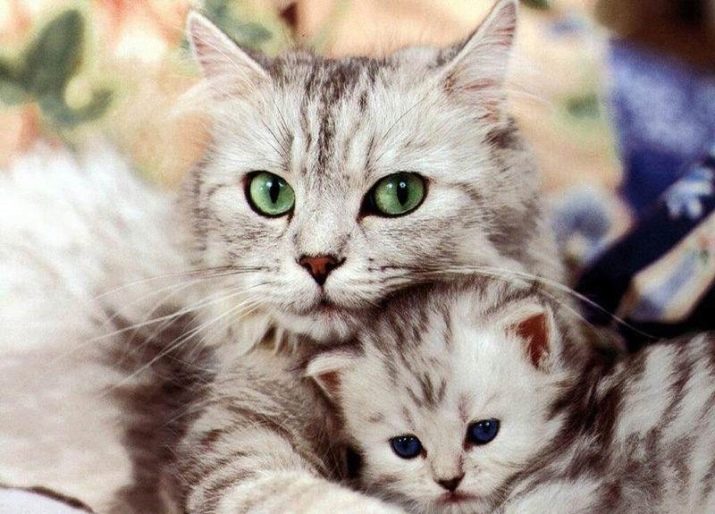
In the teeth
Teeth are a kind of factor indicating age. When determining it, a person relies on the condition of the teeth, because their appearance changes over the years, despite the replacement of dairy ones with indigenous ones. Despite the fact that in some animals they are strong until old age, and in others they are sick almost from childhood, age can be determined by such signs as:
- shade of teeth;
- stage of wear;
- accumulation of tartar;
- number of dropped units.
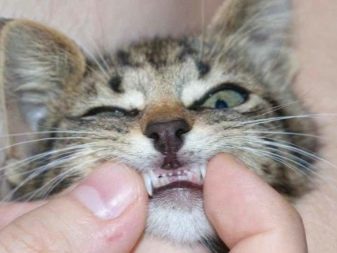

However, when determining the age of the teeth, it is necessary to rely on two aspects that make it difficult to determine the age of the pet: care and heredity.
Cats that are brushing their teeth and visiting the dentist have well-groomed teeth, which sometimes creates the illusion of a younger age. If kittens have the wrong bite, dental problems cannot be avoided, and this adds age to the existing years.
Cats have excellent dental health every year. At this time, they are white, do not have ingrained yellowness and tartar deposits. Incisors at 2 years of age begin to wear out, which is outwardly still imperceptible. A two-year-old cat has yellow teeth only if the owner does not clean them. By the age of four, the central and middle incisors are noticeably worn out. At 6 years old, the canines and extreme incisors are erased, at 10 years old teeth begin to fall out. At the age of 15, some individuals lose their canines.
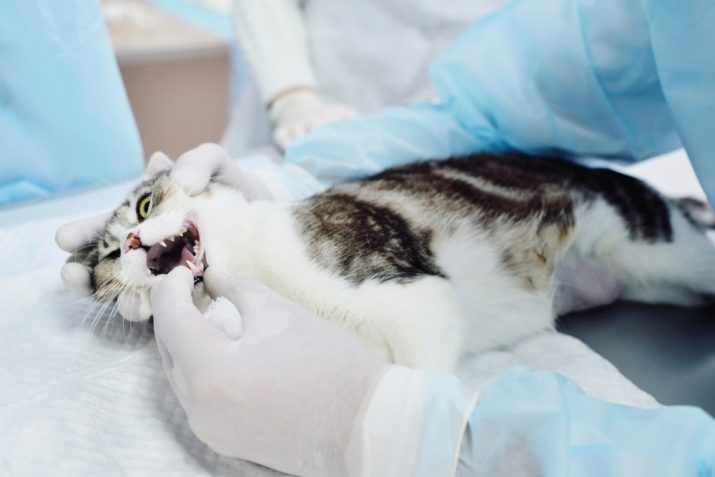
By the eyes
Like humans, cats lose visual acuity over time, which is explained by the state of the lens, and also noticeable by the iris. Your veterinarian can determine your age. Young animals do not have increased tear production. As for the iris, then the more irregularities and inclusions it has, the older the cat.
The clear boundaries of the iris and the richness of its color indicate the youth of the pet.

According to the condition of the musculoskeletal system
You can understand the age of a cat by the structure of the musculoskeletal system, which affects the manner of movement. For example, kittens have disproportionate paws, they are long relative to the body. A six-month-old baby seems lanky, after the end of puberty, his body becomes stately, and his gait becomes graceful. Kittens' ears grow faster than the skull, but by the end of growth this becomes invisible.
Young cats differ in the article, they have a formed muscle relief. Their movements are light and relaxed, at this age they are capable of long distances, and sometimes they completely shake the imagination with acrobatic stunts. This goes away with age: older animals remain agile, but over time they develop weakness in the joints. In addition, they may have a lower backbone, bulging of the shoulder blades, thinning of the muscle relief, and weight loss are observed.


By other external signs
You can determine the age of the pet based on the condition of the coat (not relevant for hairless cats). Despite the fact that the method is not so reliable in comparison with the definition by teeth and eyes, it is no less interesting. For example, kittens under one year old have a softer and silky fur coat. There are practically no tangles on her, her condition is good, indicating excellent health.
In mature feline age, it becomes rough, but does not lose its silky structure, if the owner monitors its quality.
Gray hair appears in cats when they turn 7 years old. Early gray hair indicates the presence of diseases, for the solution of which it is necessary to consult a doctor. From the age of 8, the fur coat becomes not so attractive, and therefore the owner has to more carefully monitor its health and beauty.


In addition, you can understand that the pet has reached puberty, you can by its behavior. For example, starting from the age of six months, cats begin to actively mark the territory with their own urine, which is characterized by a pungent odor. Relating to human standards, at this time they are like teenagers with their rebellious spirit.
There are conventionally developed tabular data that clearly show a person what the age of his pet is. The disadvantage of the data shown in the table is inaccuracy.
Unfortunately, information portals today often provide the attention of the reader with unverified information. Therefore, the data in the tables are different.
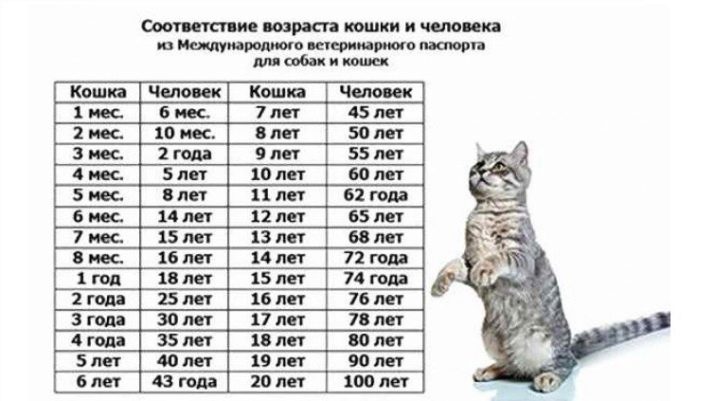
As for a more accurate version of the calculation, then to calculate it, it is necessary to have an idea about each stage of the development of the animal. This allows you to draw a mental portrait in human terms. In cats of different breeds, the vital resource for which a kitten is born, develops and grows old passes at its own pace.
For example, a respectable old age among representatives of the snow-shou breed begins at the age of 10-11.Asian tabbies live up to 20 years, tiffany and clouded cats - up to 18, and some feline record holders reach the age of 30.

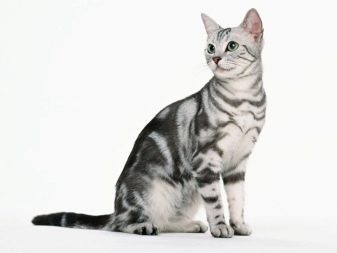
How does a cat develop by human standards?
Trying on the stages of human development for cats, you can understand how long childhood, adolescence, youth and old age take them. For example, depending on the specific breed, the children's period in cats can take from six months to a year.
The conditional boundary of its completion can be called the complete replacement of milk teeth.
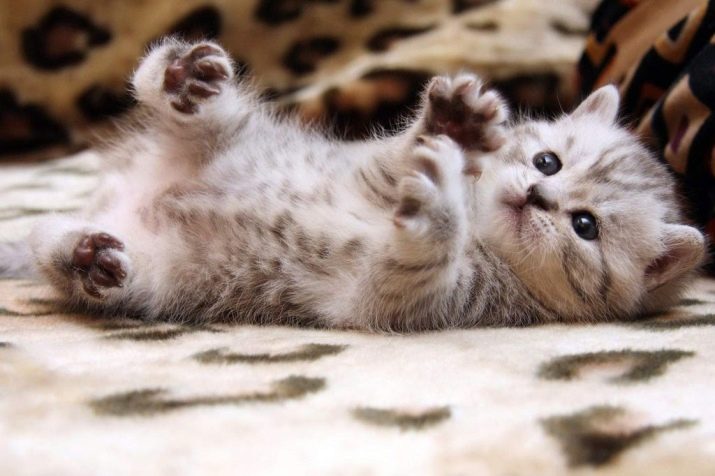
Infancy
A kitten is considered a baby in the first weeks from the moment of birth. In the first week of life, the film that protects the ears disappears. Teeth begin to erupt in two weeks, while in humans this process begins no earlier than 4-5 months. In terms of developmental level, a month-old kitten is comparable to a six-month-old baby.
Kittens of two months of age are equal to children of 10 months. A 6-month-old kitten is developed in about the same way as a baby at 1.5 years old. He is also actively interested in everything that surrounds him, pulls objects into his mouth, tries to learn the world and really needs his mother.

Childhood
The children's developmental stage in an animal begins at 3 months, proceeding rapidly up to six months. During this period, the pet continues to actively explore the world, communicate with other kittens, and also learns to communicate with the owners. He understands his own and others', tries to socialize, monitors the hygiene of his fur coat, washes, licks himself and learns to play.
Someone thinks that kittens at 3 months are comparable to children 2-5 years old. Others are convinced that this difference could be greater. In a couple of months, kittens develop by about 3-4 human years.
It was at this time that they must be taught the rules established in the house, attached to the tray and their own couch.


Teenage years
Starting at six months of age, the animal begins a period of adolescence. In adolescence, cats have already formed a character. At this time, males and cats have already completed puberty, but if males are ready for mating, then it is not recommended for females until a year. If breeders ignore this fact, the offspring of such cats is born sick.
In adolescence, the inexperienced owner attributes the pet's bad behavior to childhood, but in reality it is too late to forgive pranks at this time. The cat is already mature enough and has its own life position, often supplemented by bad habits. At this time, the pet often behaves like a developed teenager, some individuals are capricious, and in particular they love to test the boundaries of permissibility. Sometimes, with a careful attitude to pets, you can notice some coquetry between pets.

Youth
The period of youth in animals can be different, on average it is 3-4 years. Thus, a cat that has become young in a year is considered to be up to 5 years old. This is the best time to mate as the animals are still healthy and active. During this period, they can give good offspring. According to human standards, her age at this time corresponds to about 20-30 years. According to some data, its boundaries are more expanded and range from 18 to 35 (40) years.
The characters of pets at this time may be different. Some cats, like people, become balanced and self-confident, others grow up quickly. Still others do not want to part with childhood, and therefore behave like small children, playing for a long time and hiding to attack, tracking down potential prey.
Representatives of certain breeds enter the youth phase no earlier than 2-3 years (relevant for some large breeds of the feline family).

Maturity
A cat that has crossed the sixth year is considered mature. This period for her stretches up to 10 years, and for some, even less. In general, there are usually no major changes in her health with proper care. However, owners do not breed pets after they are 7 years old.... This is explained by the risk of complications in females that occur during late pregnancy.
As for the ratio with human measurements, mature animals correspond to the average age category of people from 40 to 56 years. With age, these pets allow themselves to play and fool around less and less. Most of them become sedate and solid. However, if a particular breed is naturally agility and curiosity, individual individuals do not stop their research activities and do not change their own enthusiasm with which they approach everything.

Old age
A cat that has turned 11 years old is equated to people of retirement age. The old age period in an animal of different breeds lasts up to 14 years, during its activity of pets gradually decreases. This does not mean that they become lethargic and lazy, afraid of any physical exertion. At this time, as a rule, diseases make themselves felt. Therefore, pets need increased attention and care.
It is necessary to protect "old people" from unnecessary stressful situations, to take care of their health. You cannot shout at them, it is important to ensure that they do not catch colds while walking. It is necessary to carry out preventive examinations in order to prevent health problems.
In short, they need to be cared for the same way as grandparents.

Centenarians
Long-lived cats are pets that are 15 years old or more. They are like old-timers quietly living out their days. At this time, animals are less active, they sleep a lot, suffer from weakened joints, wear or lack of teeth, and often, in view of this, refuse to use dry industrial food. Like toothless old men they need liquid food that will not injure their gums.
Some individuals may suffer from urinary incontinence, while others have a weak digestive process. You can not give them milk, give solid and coarse food. In addition, raw fish with bones is categorically unacceptable. Weakness in long-lived cats may be temporary.
Rare old people, as in childhood, try to please their owners every day by awakening according to a feline scenario.
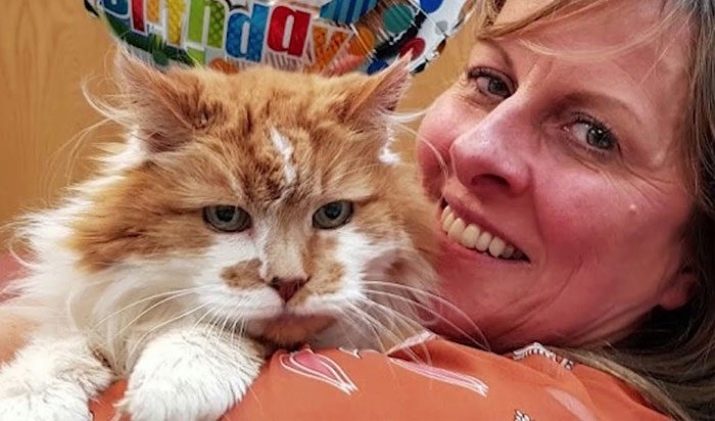
Ways to compare ages
Estimates of a feline's age in a person's years may vary. For example, in the simplest sense, it is believed that each year lived by a cat is conventionally equated to seven human years. The method is certainly not the most accurate, but it allows the owner to have a rough idea of the age of the pet. Considering that the development of cats can occur unevenly, when counting, you can rely on other methods.
For example, an interesting counting method in which the first year of a cat's life is conditionally equated to 15 human years... In the second year of a pet's life, it develops in about the same way as a person from 15 to 24 years old. All subsequent years, starting from the third, can be calculated using the formula: N = 24 + (N-2) * 4, where N is the current feline age.
There is another calculation method that conventionally divides the life resource into three main stages. To calculate the "human" age of a cat, which is actually between one and five years old, its actual age must be multiplied by 7. The formula for a pet that has reached the milestone from 6 to 11 years old looks like this: x = (z - 5) * 4 + 35, where x is the desired value. The formula for a purr at the age of 12-20 is different: x = (z - 11) * 3 + 59 (here it is necessary to multiply by 3).

Conventionally, we can assume that each of its further years is equated to four human years. For pets under three years old, this formula is irrelevant. In addition, it is necessary to take into account such a factor as the early or, conversely, late development of kittens, which is typical for representatives of certain breeds of the feline family.
You can also calculate according to another scheme. For example, a cat from a year to five years for every 12 months conditionally lives for 7 years.After that, each subsequent year she lives is equated to four human years.
Starting from its 12th birthday, each year is equated to three human years.
According to the third method of calculating the age of a cat by human standards, a special coefficient must be used in the calculations. In this case, it is necessary to take into account aspects such as the social intelligence of the animal, its physical development and the emotional sphere, comparing it with the human.
This technique was developed by zoologists and veterinarians. Its data are enclosed in a table, through which the layman can find out the approximate ratio of the age of a feline to the idea of a person.

Ratio based on approximate conversion rate
Age of the cat or cat, years | Approximate conversion factor | Human relation, years |
1/12 | 7 | 6-7/12 |
2/12 | 5.5 | 10-11/12 |
3/12 | 8-8,6 | 2-2.5 |
4/12 | 15-15.5 | 5-5.5 |
5/12 | 20 | 8-8.5 |
6/12 | 28-30 | 14-15 |
7/12 | 26-26.5 | 15-15.5 |
8/12 | 24-24.8 | 16-16.5 |
1 | 18-19 | 18-19 |
2 | 12.4-13 | 25-26 |
3 | 10-11 | 30-33 |
4 | 8.8-9.2 | 35-37 |
5 | 8-8.5 | 40-43 |
6 | 7-7.5 | 43-46 |
7 | 6.4 | 46-47 |
8 | 6.25-6.6 | 50-53 |
9 | 6.1-6.4 | 55-58 |
10 | 6-6.3 | 60-63 |
11 | 5.6-5.9 | 63-65 |
12 | 5.4 | 65-68 |
13 | 5.2-5.5 | 68-71 |
14 | 5.1-5.2 | 72-73 |
15 | 5 | 74-75 |
16 | 4.8 | 76-77 |
17 | 4.6 | 78-79 |
18 | 4.4-4.7 | 80-85 |
Quite often correct counting and comparison does not give correct results. There are various reasons for this. For example, one of them is the animal's lifestyle.
For example, it is the passivity of a pet that often shortens its biological clock, which makes it aging much faster.

Sexual activity also matters. It has been proven that in the absence of opportunities for cats and cats to realize their sexual instincts, hormonal disruption occurs in their bodies. And this entails a deterioration in the condition of bones, teeth, and the work of internal organs. Such pets age quickly, which makes it difficult to calculate their average age according to human standards.
It is generally accepted that the feline organism can begin to age after the animal celebrates its fourth birthday. Stress and emotional stress, as well as unhealthy diet, contribute to this. Often it is the owner's laziness that results in a loss of smoothness and silkiness of the coat, loss of teeth and the accumulation of tartar. The animal's diet should be balanced and complete. He needs not only nutrients, but also vitamins and minerals.

Correspondence table
Nothing will allow you to understand and calculate the age of a cat by human standards, like a table of correspondences with visual data. We draw the reader's attention to the fact that the data are approximate, and therefore it is not worth taking calculations for the idealization of the main calculation. They allow you to find out the approximate biological age, nothing more.
Age ratio of cats and humans
Age, years | |||
cats | human | cats | human |
1 month | 1 year 6 months | 5 | 36 |
2 months | 3 years 2 months | 6 | 40 |
3 months | 4-5 years old | 7 | 44 |
4 months | 6 years 8 months | 8 | 48 |
5 months | 8 years 4 months | 9 | 52 |
6 months | 10 years | 10 | 56 |
7 months | 10 years 10 months | 11 | 60 |
8 months | 11 years 8 months | 12 | 64 |
9 months | 12 years 6 months | 13 | 68 |
10 months | 13 years 4 months | 14 | 72 |
11 months | 14 years 2 months | 15 | 76 |
1 year | 15 | 16 | 79 |
2 years | 24 | 17 | 82 |
3 years | 28 | 18 | 85 |
4 years | 32 | 19 | 88 |
20 | 91 |
It is important to understand that data may differ between representatives of the same breed, but of different sex. Like humans, they can have a different type of biological clock. For example, females of elite breeds are rapidly aging, which breeders mercilessly use for breeding and profit. The body of these cats wears out quickly, they weaken, which can lead to profuse hair loss, loss or increased grinding of teeth.
In addition, they are susceptible to diseases that shorten the life resource and make it difficult to determine the age by the standards of people.

Therefore, at the same actual age, they can look radically different outwardly. Outdoor animals age earlier.To know more precisely what is the biological age of a cat or a cat, you should contact your veterinarian. Specialists of this kind are taught to be based on the physiology of animals and their external data, and therefore they often give a very accurate assessment.
How to determine the age of a cat is described in the next video.
































